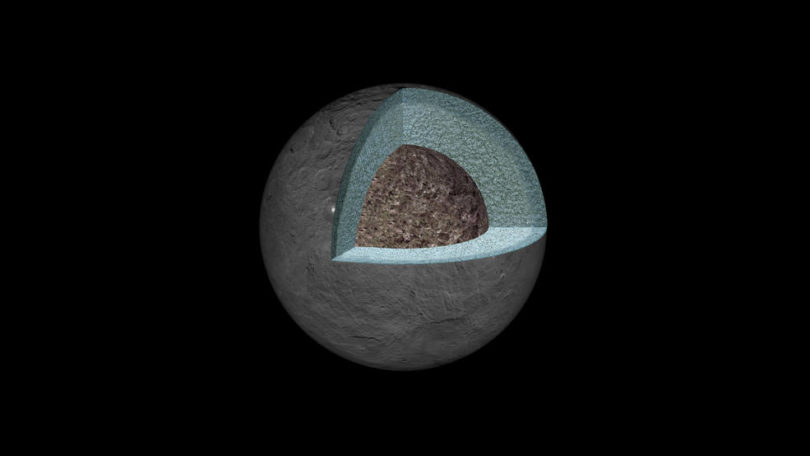Even though the interior of Ceres cannot be seen by the images that NASA’s Dawn spacecraft has taken in orbit around the dwarf planet, Dawn is still a key aspect in determining Ceres’ inner structure. By tracking subtle changes in Dawn’s motion, scientists can measure the variations in Ceres’ gravity. By using this data, scientists, for the first time,have created a map of Ceres’ gravity and will provided clues to Ceres’ internal structure. The results have been published in the scientific journal Nature. “The new data suggest that Ceres has a weak interior, and that water and other light materials partially separated from rock during a heating phase early in its history,” says Ryan Park, lead author of the study at NASA’s Jet Propulsion Laboratory, in a press release. This study confirmed that Ceres possess a special quality called “hydrostatic equilibrium” where Ceres’ interior is so weak that its overall shape is determined by its rotation. The researchers compared Ceres’ shape to its gravity field and found that Ceres was indeed in hydrostatic equilibrium, which often corresponds to roundness. It was because of this that Ceres was classified as a dwarf planet in the first place in 2006. The data also indicated that Ceres’ interior is differentiated, which means that at different depths, its layers are compositionally different with the most dense layer at the core. Ceres is also much less dense than other bodies in the solar system, such as the moon and asteroid Vesta (Dawn’s previous target). It has been suspected that Ceres also contains low-density materials like water ice, while the study shows that these materials separated from the rocks and rose to the outer layers.
http://www.astronomy.com/news/2016/08/take-a-look-inside-ceres







